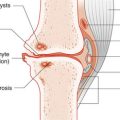7 Liver, biliary tract and pancreatic disease
Questions
Please could you tell me the normal range of values for the liver function test serum alkaline phosphatase. The only mention of the parameters is that a reading of > 1000 = serious liver condition.
Flapping tremors: why do we get flapping tremors and no other types of tremor in liver failure? What is their mechanism and in which other conditions do they occur?
In a case of common bile duct stones, where it is acknowledged that spontaneous passage within 24 hours is observed in approximately 50% of patients provided the stone is small, and that in these cases there is no need for a sphincterotomy, is the use of antispasmodics, e.g. Buscopan (active ingredient hyoscine-N-butylbromide), recommended? Surely these will reduce the pain and improve the chance of a spontaneous release of obstruction without surgical procedure?
The normal serum alkaline phosphatase is 40-100IU/L. Levels of 400 + are common in cholestatic liver disease. Levels of 1000 and over are seen in primary biliary cirrhosis and liver metastases. (Note: remember alkaline phosphatase is also found in bone so that bone disease, e.g. Paget’s, is also associated with a raised serum alkaline phosphatase.)
It used to be said that this was due to the effect of the high level of bile salts on the sinoatrial node. However, recent evidence suggests that bradycardia in adults is rare in cholestatic jaundice.
Monotherapy with 5M units daily for 4 weeks then 5M units three times a week for 20 weeks of alpha-interferon was used in one trial with a high success rate, (i.e. no RNA detected). Pegylated interferon is now used instead because of its better side effect profile.
The liver is a vascular organ that often behaves as a ‘privileged tissue’ in that little immune reaction occurs. The liver appears to induce a state of suppression by the secretion of large amounts of donor-soluble major histocompatibility (MHC) class 1 antigen with the migration of large numbers of donor dendritic cells from the donor liver into the host. This was first shown by Sir Roy Calne in pigs.
It has been recognized for many years that a fatty liver is sometimes found in patients who do not drink alcohol. The term ‘non-alcoholic steatohepatitis’ (NASH) was introduced in the 1990s. Subsequently, it has been recognized that some patients have a fatty liver on biopsy with no accompanying inflammation; this group is called non-alcoholic fatty liver disease (NAFLD). It seems that only patients with evidence of NASH on biopsy progress to chronic liver disease with fibrosis and cirrhosis. Some of these patients do have high lipid levels (both cholesterol and triglycerides) but this is by no means invariable. NAFLD is associated with the metabolic syndrome (Box 7.1).
Nowadays the model for end-stage liver disease (MELD) is used as a predictor for liver transplantation in decompensated as well as compensated liver disease. It is based on serum creatinine, serum total protein and the international normalized ratio. The Child criteria are given in Table 7.1.
Flapping tremors occur in hepatic encephalopathy and in chronic obstructive pulmonary disease with carbon dioxide retention. The mechanisms are unclear but ammonia seems to be involved in the tremor seen in hepatic encephalopathy.
Hepatocellular carcinoma can be treated with surgical treatments:
Radiofrequency ablation involves passing a high-frequency alternating current to the tip of an electrode that is placed in the cancer lesion. The ions in the tissue follow the change in direction of the alternating current, producing frictional heat in the tissue to about 60°C. This produces a thermal energy lesion. It is useful for small tumours and can be carried out laparoscopically. In one series the patients’ disease was controlled locally for 18 months (Barnett & Curley 2001).
In severe acute pancreatitis, pancreatic necrosis will release pancreatic enzymes into the peritoneal cavity; this causes paralytic ileus.
It has sensitivity and specificity of 80-90% for established carcinoma. It is too insensitive to be used as a screening test for pancreatic cancer.




